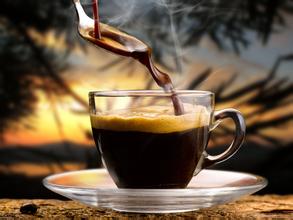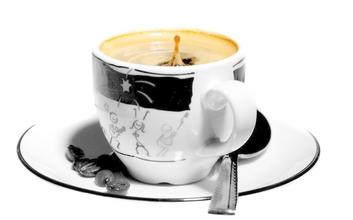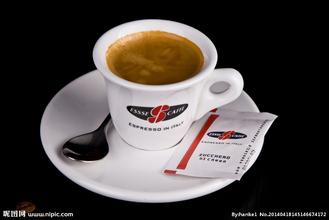Introduction to the rich and balanced coffee flavor manor of Valenford Manor, Jamaica
Tropical rainforest climate. The rainy season is from May to June and from September to November every year, with the most showers in January and May. The dry season is from December to March next year, and the weather turns cooler. The half-year period from June to the end of November is often hit by hurricanes and tropical storms. The north-central region is rich in rainfall, the climate is generally between 22 and 32 degrees, and the annual average temperature is 27 degrees. Jamaica is an island country located at 17.42 degrees north latitude and 18.31 degrees north latitude and 76.11 degrees to 78.22 degrees west longitude. [1] the island of Jamaica is 234km long from east to west and 82km wide from north to south, with a territorial area of 11420 square kilometers, of which the land area is 10991 square kilometers. To the east across the Strait of Jamaica, facing Haiti, about 140 kilometers north of Cuba. It is the third largest island in the Caribbean, with a coastline of 1220 kilometers. Jamaica ranks third in the West Indies after Cuba and Haiti and Kingston is also a tourist resort. It is located at the southwest foot of Lanshan, the highest peak on the island in the southeast coast bay, and there is a fertile Guaneya plain nearby. The area (including the suburbs) is about 500square kilometers, with a population of 970000. It is like spring all the year round, and the temperature is often between 23 and 29 degrees Celsius. On three sides of the city are green hills and peaks, and on one side are blue waves in the far sea and picturesque scenery. The reputation of "Queen of the Caribbean City" is composed of the Senate and the House of Representatives for a term of five years. There are 21 senators, appointed by the Governor, including 13 recommended by the Prime Minister and 8 recommended by the leader of the opposition. 63 members of the House of Representatives are elected by universal suffrage. The current House of Representatives was elected on December 29, 2011, with 42 seats for the people's National Party and 21 seats for the Dental Labour Party. Senate Speaker Freud Morris (Floyd Morris) took office on May 17th, 2013. House Speaker Michael Peart (Michael PEART) took office as Governor Patrick Linton Allen on January 17, 2012. Born in Portland on February 7, 1951. He studied at Tooth Moniger normal College and received a bachelor's degree in history and religion, a master's degree in systematic theology and a doctorate in educational administration from Andrews University in the United States. He has worked in the priesthood since 1986. He has served as pastor of the Seventh Day Adventist Church in Spain ("the Seventh Day"), Director of Education and Liaison Affairs of the Central Dental Seventh Church Federation, Director of Education and Family Life Affairs of the West Indies Sabbath Union, President of the Central Tooth Seventh Church Federation, and Chairman of the West Indies Seventh Day Alliance. In 2006, he was awarded the "Medal of Excellence" by the dental government. The national emblem of Jamaica, the sixth Governor after taking office on February 26, 2009, is the shield emblem of a white red cross. [18] the red cross symbolizes that Jamaicans believe in Christianity and Catholicism. Five golden pineapple knots are picked and distributed in the four directions and intersections of the cross, indicating that the cultivation industry in Jamaica is well developed. A green crocodile lies at the top of the national emblem; the yellow belt with the words "outstanding, one nation" is decorated at the base of the national emblem in English. On the left and right is an Indian Arawak in a bright headdress and red and green feathered skirts; the young woman on the left holds the national emblem in her left hand and a basket of pineapple in her right hand, while the young man on the right holds the national emblem in his right hand and a long bow in his left hand. It shows the determination of the Jamaican people to fight for the prosperity of the motherland.
The difference in transportation between Blue Mountain Coffee and other coffee is that it is transported in barrels with a capacity of 70 kilograms, a replica of Bonifieur barrels produced in Guadeloupe in the last century. The barrel was originally used to carry flour shipped from the United Kingdom to Jamaica, usually with a trademark and the name of the manufacturer. The Coffee Industry Council issued certificates for all authentic Jamaican coffees and stamped them before export. The Jamaican government used to insist that all Blue Mountain coffees were roasted in Jamaica to ensure that the quality remained the same. In fact, baking is a fine art, and it takes experience, training and expensive equipment to do a good job. From the consumer's point of view, coffee beans should be obtained and drunk immediately after baking. Coffee roasting in Jamaica is unlikely to meet this requirement. Now, raw coffee beans from Jamaica can be exported to some small estates that also grow Blue Mountain coffee, such as Wallenford Estate, Silver Hill Estate and Atlanta Estate in J.Martinez. Even the largest landowners in the region are small-scale growers by international standards, many of whom are small landowners whose families have been working on the land for two centuries. The coffee industry in Jamaica faces a series of problems, such as the impact of hurricanes, the increase in labor costs and the difficulty of mechanizing terraces. Many small estates and farms were difficult to rationalize. By 1981, about 1500 hectares of land in Jamaica had been reclaimed for coffee cultivation, followed by investment in another 6000 hectares of coffee land. In fact, today's Blue Mountain area is a small area with a planting area of only 6000 hectares, and not all coffee marked "Blue Mountain" can be grown there. An additional 12000 hectares of land is used to grow two other types of coffee (non-Blue Mountain Coffee): Alpine Top Coffee (High Mountain Supreme) and Jamaican Coffee (Prime Washed Jamaican) it is necessary to learn more about the myth of Blue Mountain Coffee, as the image of the past is often not consistent with the reality of today. In 1725, Sir Sir Nicholas Lawes brought the first Blue Mountain Coffee species from Martinique to Jamaica and planted them in the St.Andrew area. Today, St. Andrew is still one of the three major producing areas of Blue Mountain Coffee, while the other two are Portland and St..Thomas. In eight years, Jamaica exported more than 375 tons of pure coffee. In 1932, coffee production reached its peak and more than 15000 tons of coffee was harvested.

Important Notice :
前街咖啡 FrontStreet Coffee has moved to new addredd:
FrontStreet Coffee Address: 315,Donghua East Road,GuangZhou
Tel:020 38364473
- Prev

Introduction to Cliff Manor, the characteristics of the Blue Mountain Coffee Manor in Jamaica
Thirty years ago, people of insight in Jamaica decided to adopt a policy of cherishing talent for the sake of the country's sports tradition and the growth of talents. All athletes who stay in Jamaica for training will receive the same generous treatment as those who emigrated to Europe and the United States. The government guarantees them scholarships to go to universities and opportunities for exchanges in Europe and the United States. After such a policy of cherishing talent lasts for 30 years, the world's
- Next

Fragrant and delicious Nicaraguan Coffee Manor: flavor and taste characteristics of Joy Manor
Since July 1927, Augusto. Cesar. Sandino led the people in a guerrilla war against the US occupation, forcing the US military to withdraw in 1933. On February 21, 1934, the Commander of the Nicaraguan National Guard, Anastacio. Somocha. Garcia assassinated Sandino at the behest of US President Roosevelt. He became president in 1936 and has been pro-American for more than 40 years since then.
Related
- Does Rose Summer choose Blue, Green or Red? Detailed explanation of Rose Summer Coffee plots and Classification in Panamanian Jade Manor
- What is the difference between the origin, producing area, processing plant, cooperative and manor of coffee beans?
- How fine does the espresso powder fit? how to grind the espresso?
- Sca coffee roasting degree color card coffee roasting degree 8 roasting color values what do you mean?
- The practice of lattes: how to make lattes at home
- Introduction to Indonesian Fine Coffee beans-- Java Coffee producing area of Indonesian Arabica Coffee
- How much will the flavor of light and medium roasted rose summer be expressed? What baking level is rose summer suitable for?
- Introduction to the characteristics of washing, sun-drying or wet-planing coffee commonly used in Mantenin, Indonesia
- Price characteristics of Arabica Coffee Bean Starbucks introduction to Manning Coffee Bean Taste producing area Variety Manor
- What is the authentic Yega flavor? What are the flavor characteristics of the really excellent Yejasuffi coffee beans?

